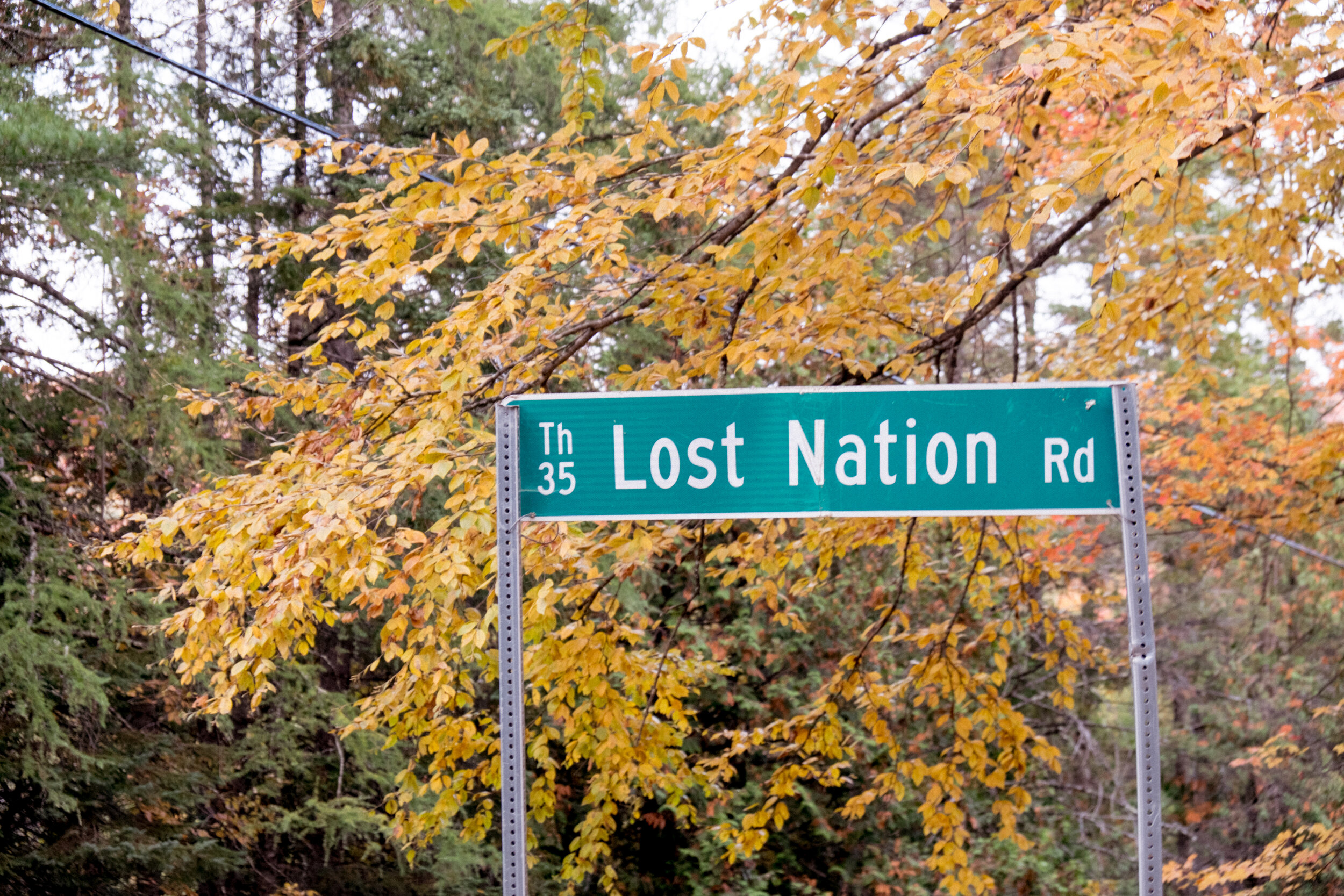Lost Nation Road Ruminations
Written by GRP Biathlete Raleigh Goessling.
If you have ever navigated to the Craftsbury Outdoor Center, you know that it is located on Lost Nation Road. If you have searched for Lost Nation Road on your GPS service of choice, you may have noticed that there are many Vermont towns that feature a Lost Nation Road. In fact, there are 5 roads bearing the Lost Nation name which stretch through eight towns in northern Vermont. Lost Nation Brewing of Morrisville and the Lost Nation Theater in Montpelier also bear the “Lost Nation” title.
The Vermont Public Radio (VPR) program Brave Little State tackled the namesake of VT’s Lost Nation Roads in its 3rd Annual Brief History of Vermont Road Names episode. You can listen to the entire episode here. VPR correspondent Nina Keck took on the task of getting to the root of Lost Nation Road’s origins. Keck got some help from Craftsbury locals Dave Linck of the Craftsbury Historical Society and the Outdoor Center’s own Russ Spring.
Linck is a noted local history expert, and during a 2015 Craftsbury Historical Society (CHS) meeting he and other members of the Society discussed the origin of Craftsbury’s Lost Nation road. The prevailing theory from the 2015 CHS meeting centered on a hippie colony named “Lost Nation Farm” which had its roots in Craftsbury, before relocating to North Wolcott. The room full of locals could not come to a definitive conclusion on the source of the road name.
Russ Spring’s parents founded the Outdoor Center in Craftsbury in the 1970s. Growing up on Lost Nation Road, Russ came across several explanations for Lost Nation Road’s name. The theory Russ put forward to VPR comes to us via Earl Wilson, a Craftsbury “old timer” who plotted the route of the Bailey Hazen Road through Vermont. The principle architects of the Bailey Hazen Road were Jacob Bayley and Moses Hazen. These two men were tasked by General George Washington during the Revolutionary War to create a road for troops to use in an invasion of Quebec. Portions of this Revolutionary War era path have been retained and now serve as modern auto roads. The old Bailey Hazen Road passes through Craftsbury. People who have explored the COC’s trails will recognize the Bailey Hazen name from the trail which links the Ruthie’s run portion of the network to the core trails. The intersection of the two roads is noted by a placard on the “Matterhorn” hill, section of Lost Nation Road, just down from where the Murphy’s Field ski trial crosses Lost Nation Road to Fox Run and the Cabin trail. (Intersection 20 on this map.)
Russ summarized Wilson’s explanation to VPR “When they were kind of clearing that trail, they came across a pre-existing trail, and they decided, well, this must mean we're gonna call this a Lost Nation road after the lost nation of Israel, that must have made it. But in fact, Earl thought it was more likely a trail that was made by Native Americans along the side of the lake. And it just intersected the route of the Bayley-Hazen Road. That is how he told the story.”
During the VRP investigation, Nina Keck connected with Rich Holschuh, a spokesperson for the Elnu Abenaki tribe to explore the connections between Vermont’s Lost Nation roads and Native Americans. As far away as Iowa, there are connections between stories of disappearing Native American homes and areas labeled “Lost Nation”. Holschuh points out that labeling Native Nations as “lost” helps to perpetuate the false stereotype that Indigenous populations simply faded away and are no longer present today. The occupation and colonization of Indigenous lands by European settlers is a part of the founding of Vermont and the USA that Rich Holschuh points out is “hard to face”, “and so it’s a lot easier to have lost nations.”
Hippie colonies, Revolutionary War road builders, and the re-writing of Indigenous peoples’ subjugation are all possible sources of Lost Nation Road’s namesake. With no concrete evidence for any of these providences, Dave Linck declared that the true origin of the road name will most likely remain one of “history’s mysteries.”


